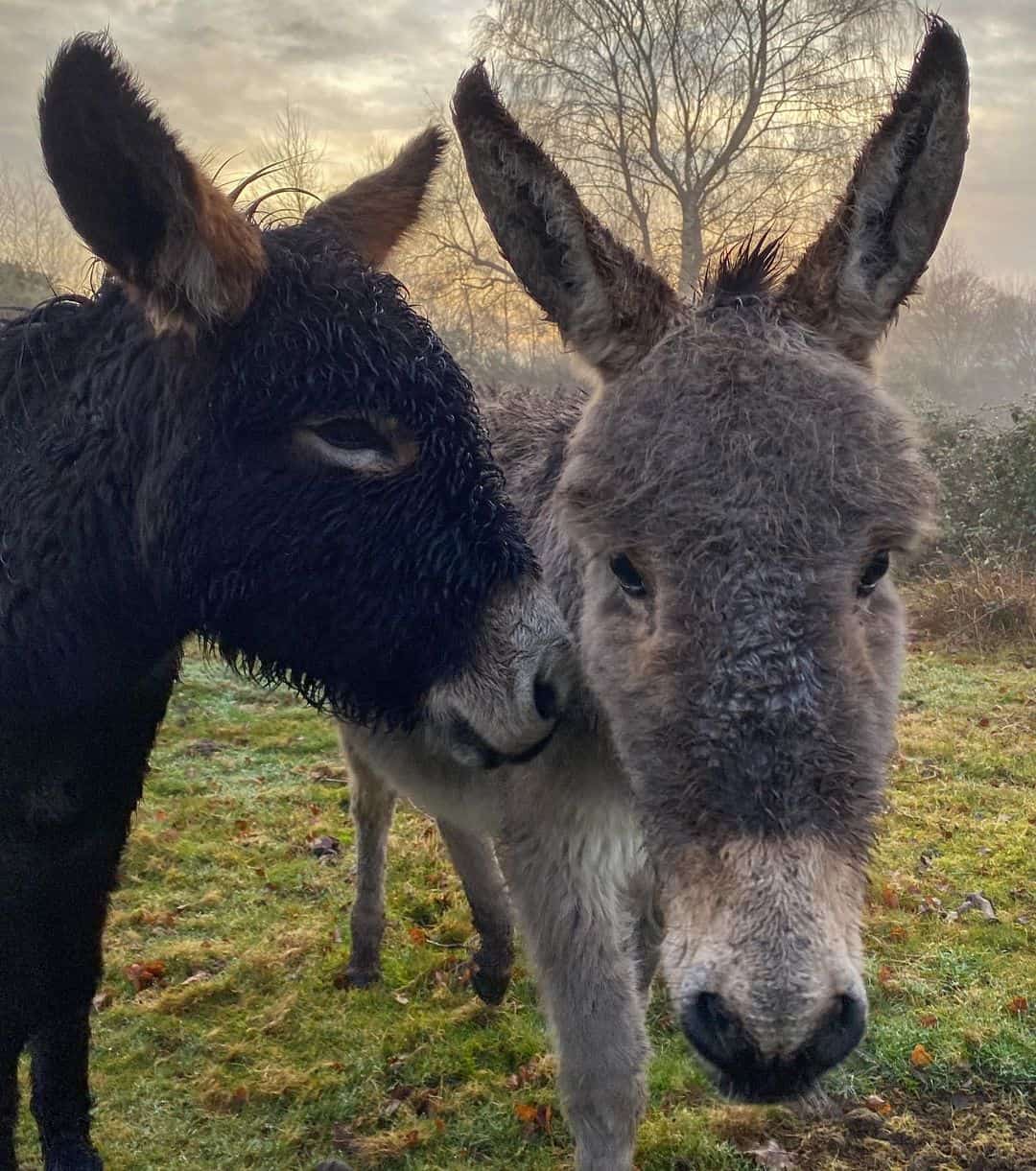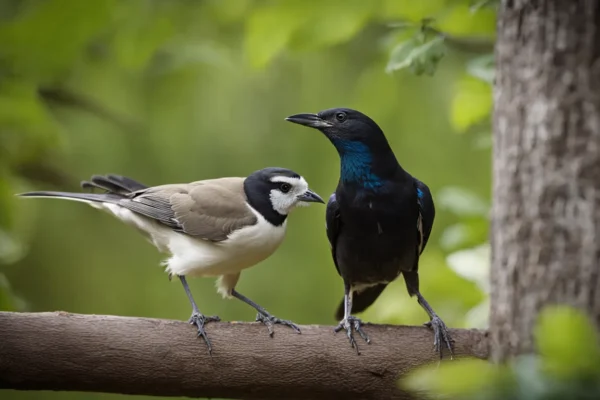It’s likely that you have seen a donkey if you have ever been on a farm. Or maybe a mule or burro caught your eye. Who knows what will happen next? These creatures are all same in terms of appearance, behavior, and even sounds produced. Well, donkeys and mules are the same animal to uninitiated eyes and ears. Nevertheless, upon closer inspection, two of the three are essentially the same animal, and there are notable distinctions between them.
There are already more than 50 million mules and donkeys worldwide. They are all formed and sized differently. You’d be wrong if you jumped to the conclusion that donkeys and horses are similar. Additionally, there are notable differences between horses and donkeys in almost every facet of their physiognomy and psychology.
But this is the discussion about the distinctions between a donkey and a burro, right? So let’s address it first before talking about the distinctions between mules and donkeys. Now let’s get started without further ado!
Are Burros and Donkeys the Same or Different?

As a consequence of cultural influences, exposure to many languages, and a host of other factors, humans sometimes have a tendency to give the same animal several names. In several instances, words from other languages become so ingrained in our daily lexicon that we begin to associate them with meanings that are entirely unrelated to their original context.
The term “burro” had the same situation. According to the Merriam-Webster dictionary, burro simply means “donkey” in Spanish, or more specifically, “a small donkey used as a pack animal.” It is not a kind of donkey.
So what distinguishes donkeys from burros? Naturally, no. Though they go by various names in different languages, they are the same creatures. It’s true that some people claim burros are smaller than donkeys.
Although little donkeys go by various names in Spanish and English, they are essentially the same animal and are referred to as burros in certain regions of the nation. While coat color variations are sometimes seen, donkeys and burros often have the same appearance, mannerisms, and even ‘Hee-Haw’ sound.
However, aren’t Burros little donkeys?
Some would argue that due to their size, burros are more like tiny donkeys than they are like ordinary donkeys. They would be entirely mistaken, however. Why?
Measuring from the foot to the shoulder, normal donkey heights range from 36 to 48 inches. They may weigh between 400 and 1100 pounds, or enormous donkeys, in terms of weight. The same is true with burros, where there may only be a few inch variation in height.
But when it comes to little donkeys, there is a noticeable disparity in their weight and height. The maximum height for miniature donkeys is about 36 inches from hoof to shoulder. They only weigh 400 pounds maximum when it comes to weight.
Do You Know Any Other Donkey Names?
Sure, you may refer to a donkey by hundreds of various names. Languages and geographical regions have different vocabulary and naming conventions. Other than the term burro, the following are some of the most often used terms and titles to refer to a donkey:
The Italian term for “donkey” is asino.
Donkey ass, male or female
Jenny: a term for a donkey who is female
Jack: a term for a male donkey
The term “molly” designates a female mule.
The British name for “donkey” is moke.
The reverse of a mule, a hinny is the offspring of a male horse and a female donkey.
Other words pertaining to donkeys include
A filly is a female donkey under four years old.
Colt is a male donkey under four years old.
Mare is a female donkey; Gerding is a male donkey who has been castrated; and Stallion is a male donkey that is not castrated.
Rig is a male donkey without testicles on the outside.
A yearling is a juvenile donkey that is between one and two years old.
Mules and Donkeys! – In Actuality, They Are Not the Same!
Mules and donkeys are closely related animals, yet they are not exactly the same. It’s true that people find it difficult to distinguish between them, and this difficulty increases when horses are included. However, the distinctions between the three animals are evident to a trainer’s eye and to those who have personally seen all three of them. So let’s examine donkeys and mules more closely to see what makes them both so similar and so distinct!

Apperence
There are several physical similarities between mules and donkeys. However, comparing the data, we can see that there are disparities starting with the animals’ weight, height, and even longevity.
Adult donkeys often stand 36 to 60 inches tall, whereas adult mules typically reach 46 to 70 inches tall. An adult donkey’s typical weight ranges from 400 to 1100 pounds (mammoth donkeys). A mule, meanwhile, has a weight range of 600 to 1500 pounds. Mules typically live between 35 and 40 years, whereas donkeys are predicted to live anywhere from 25 to 30 years.
Their trainability is perhaps the most noticeable distinction between mules and donkeys. Donkeys are exceedingly smart, yet they can’t seem to get their way. In addition to being very clever, mules are also kind, submissive, and well-mannered.
Their origin

It is said that donkeys descended from the African wild ass. Furthermore, it’s thought that ancient Egypt, notably in Africa, is where they were originally tamed and put to use. There are theories that, around 6000 years ago, donkeys were also among the animal resources in Mesopotamia.
Conversely, mules have no particular place of origin. Why, if you may ask. In actuality, crossbreeding between horses and donkeys produces mules. A mule is the offspring of a male donkey mating with a female horse. As of right now, mules are thought to be the first example of animal hybridization. The earliest humans to raise mules are said to have been the ancient inhabitants of northern modern-day Turkey. Mule breeding is also said to have originated in Mesopotamia, ancient Greece, Asia, and Egypt.
Nutrition
Examining the food and nutritional preferences of animals is one of the greatest methods to compare them. Donkeys, for instance, are great farm animals since they don’t need a lot of food to live and thrive. In general, donkeys are content when given grass, hay, and straw. A donkey’s diet might consist of 50% or more grass, hay, or haylage.
In addition to feeding on grass and hay, mules often consume foods that horses like. Thus, in addition to other fruits and vegetables, their diet also includes carrots and apples. Although they don’t eat much, mules do need good quality hay and grass in addition to fruits and vegetables.
Use and Trainability

Donkeys are used for a variety of tasks, most often related to agricultural labor. These creatures are robust and industrious, often used for heavy lifting. Donkeys are great labor animals, but they are seldom ever ridden.
Because of their size and general stability, mammoth donkeys are the only donkeys that are suited for riding. Ordinary donkeys are not suited for riding due to their intransigence and short fuse, in addition to their lack of physical characteristics.
Mules, however, combine the greatest qualities of both worlds; they may be ridden like horses and are as hardworking as donkeys. Mules are great pack animals and are useful for hauling carts or for draught labor. They can even race, leap, and do almost all tasks performed by horses.
How About the Hinnies?

A male horse and a female donkey may have domesticated children called hinnies. Not only is it not of mule ancestry, but it also differs greatly in physiology and disposition. The typical hinny has a tiny body with stronger legs and shorter ears. Additionally, there is the thick mane, which is undoubtedly thicker than the typical mule’s. Additionally, hinnies appear to have more in common with horses than with donkeys. But in the end, hinnies undoubtedly resemble mules more, which is why it’s difficult for people to distinguish between the two.
Final Thoughts
Humans have coexisted with donkeys for thousands of years. Like horses, cows, and other domesticated animals, they have contributed to the construction of human civilizations. But donkeys appear to be underestimated as much as they are undervalued. As a result, it’s critical to raise awareness of these amazing creatures, who not only support humans on farms but also make great friends with other farm animals. Hopefully, all the pertinent details about donkeys, mules, and hinnies have been covered in this essay.






